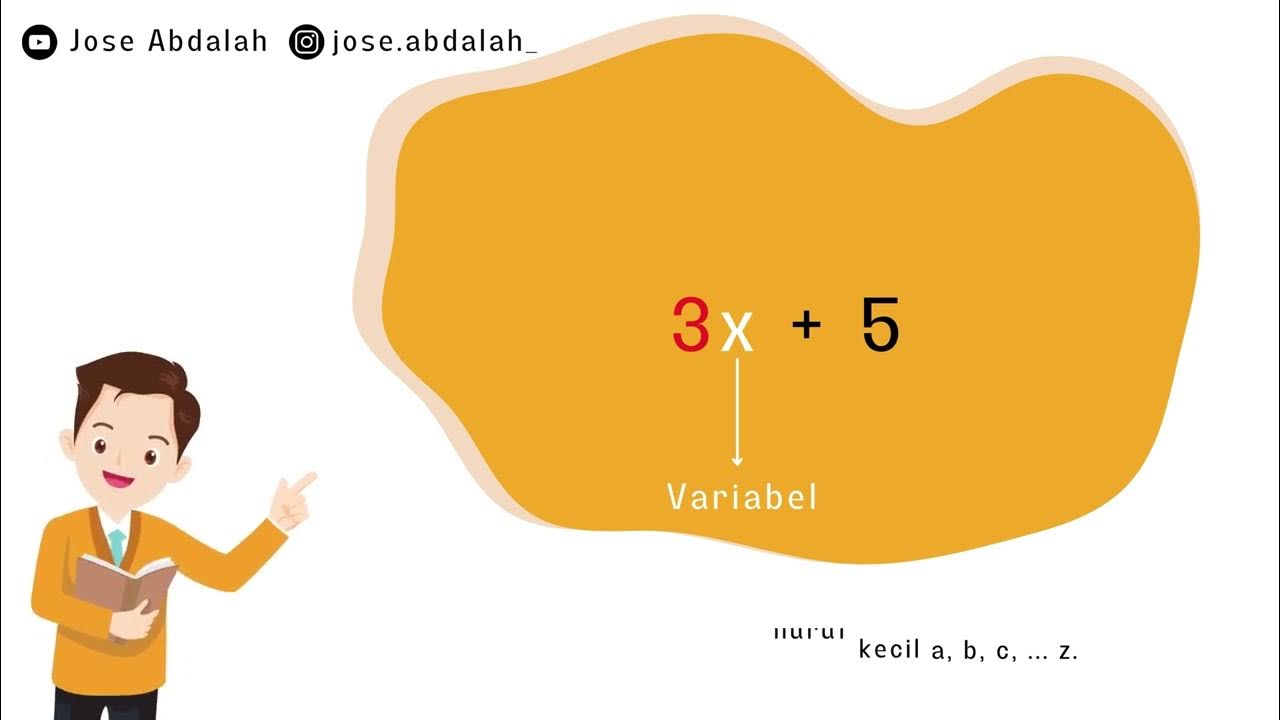Pola Bilangan [Part 1] - Mengenal Pola Bilangan
Summary
TLDRIn this video, Pak Beni introduces the concept of number patterns for 8th-grade students. He explains various types of number sequences such as odd numbers, even numbers, Fibonacci numbers, Pascal’s numbers, arithmetic, and geometric sequences. Pak Beni also highlights key terms like 'terms' and 'n-th term,' helping students grasp how to identify and predict subsequent numbers in different patterns. The video provides examples and explanations of how to analyze these sequences, offering clear methods to calculate future terms. Pak Beni promises more advanced topics like arithmetic and geometric series in the next lesson.
Takeaways
- 😀 Pola bilangan (number patterns) are sets of numbers that follow a consistent, predictable sequence.
- 😀 The main goal of the lesson is to help students understand number patterns, learn related terminology, and calculate terms in various sequences.
- 😀 The lesson covers different types of number patterns, including odd numbers, even numbers, Fibonacci sequence, Pascal's triangle, square numbers, rectangular numbers, and triangular numbers.
- 😀 The key terms include 'terms' (suku) and 'n-th term' (suku ke-n), which refer to the position and value of a specific number in the sequence.
- 😀 To identify the next terms in a sequence, students can use analysis (trial and error) or formulas, depending on the type of sequence.
- 😀 An example of an arithmetic pattern is the odd number sequence (1, 3, 5, 7, ...), where each term increases by 2.
- 😀 In a geometric sequence, like 2, 6, 18, ..., each term is multiplied by 3 to get the next term.
- 😀 The Fibonacci sequence, where each term is the sum of the two preceding ones (1, 1, 2, 3, 5, 8, ...), is another important pattern introduced in the lesson.
- 😀 Pascal's triangle represents a number pattern where each number is the sum of the two numbers directly above it. This pattern is used in advanced mathematics.
- 😀 Special number patterns like square numbers (1, 4, 9, 16, ...) and rectangular numbers (2, 6, 12, ...) are also explored, with formulas provided for calculating their terms.
Q & A
What is the definition of a number pattern?
-A number pattern is a sequence of numbers that follows a specific, regular, and consistent rule or formula.
What are some examples of common number patterns mentioned in the video?
-Examples of common number patterns include odd numbers, even numbers, Fibonacci sequence, Pascal's triangle, arithmetic sequences, and geometric sequences.
What is the term 'term' (suku) in the context of number patterns?
-In the context of number patterns, a 'term' refers to each individual number in a sequence, with the first term being denoted as U1, the second term as U2, and so on.
How do we determine the next term in an arithmetic sequence?
-In an arithmetic sequence, you determine the next term by adding or subtracting a constant value (common difference) to the previous term.
What is the Fibonacci sequence, and how is it formed?
-The Fibonacci sequence is a series where each term is the sum of the two preceding terms. It starts with 1, 1, and the next terms are 1 + 1 = 2, 1 + 2 = 3, 2 + 3 = 5, and so on.
How do you determine the next term in a geometric sequence?
-In a geometric sequence, the next term is found by multiplying the previous term by a constant ratio.
What is Pascal's Triangle, and how is it used in number patterns?
-Pascal's Triangle is a triangular array of numbers where each number is the sum of the two numbers directly above it. The numbers in each row form a sequence, and this triangle is used in combinatorics, probability, and algebra.
What is the formula for the nth term of a square number pattern?
-The nth term of a square number pattern is given by the formula U(n) = n², where each term is the square of its position in the sequence.
How do you find the nth term of a rectangle number pattern?
-To find the nth term of a rectangle number pattern, you use the formula U(n) = (n + 1) * n, where 'n' is the position in the sequence, and you multiply 'n' with 'n + 1'.
What is the general approach for finding terms in a triangular number pattern?
-In a triangular number pattern, the nth term is found by using the formula U(n) = (n * (n + 1)) / 2, which is the sum of the first 'n' natural numbers.
Outlines

Esta sección está disponible solo para usuarios con suscripción. Por favor, mejora tu plan para acceder a esta parte.
Mejorar ahoraMindmap

Esta sección está disponible solo para usuarios con suscripción. Por favor, mejora tu plan para acceder a esta parte.
Mejorar ahoraKeywords

Esta sección está disponible solo para usuarios con suscripción. Por favor, mejora tu plan para acceder a esta parte.
Mejorar ahoraHighlights

Esta sección está disponible solo para usuarios con suscripción. Por favor, mejora tu plan para acceder a esta parte.
Mejorar ahoraTranscripts

Esta sección está disponible solo para usuarios con suscripción. Por favor, mejora tu plan para acceder a esta parte.
Mejorar ahoraVer Más Videos Relacionados

Data & Diagram [Part 3] - Mencatat Data pada Tabel Frekuensi

Video Animasi Matematika - Bentuk Aljabar

Statistika Kelas 8 [Part 1] - Menganalisis Data

Fungsi Kuadrat [Part 6] - Bentuk Umum Fungsi Kuadrat

Kekongruenan dan Kesebangunan [Part 2] - Kekongruenan Dua Segitiga

Lingkaran [Part 1] - Mengenal Lingkaran
5.0 / 5 (0 votes)
